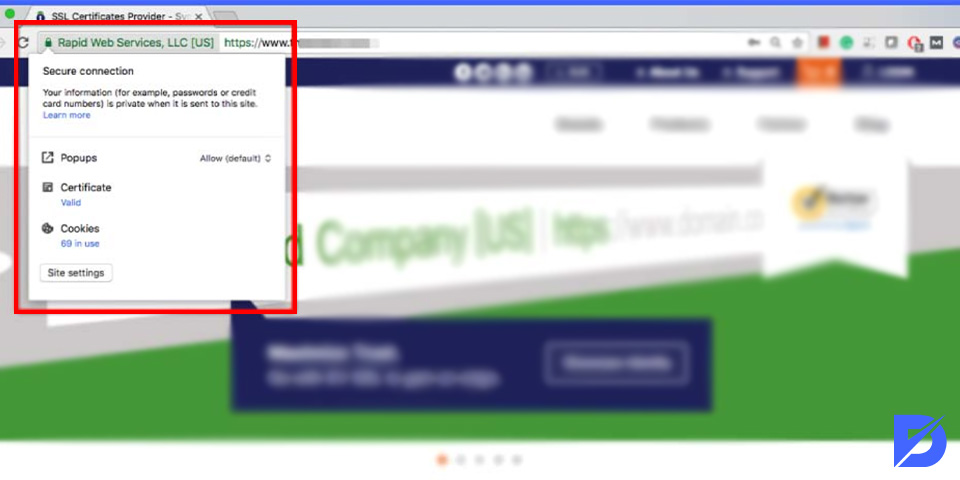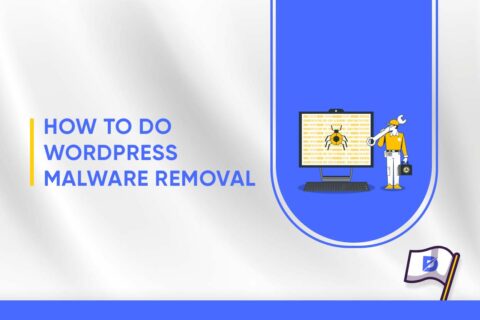An SSL certificate (Secure Sockets Layer) is essential for securing communication between a website and its visitors. It encrypts sensitive information such as identity details, passwords, and credit card numbers, ensuring they don’t fall into the wrong hands. Installing an SSL certificate on your WordPress website is crucial for gaining user trust, especially with the growing importance of online shopping. Sites without SSL certificates are often avoided by users, making it necessary to understand how to install one.
Why You Need an SSL Certificate for WordPress
Having an SSL certificate is so essential for several reasons:
- Security: SSL protects sensitive data from being intercepted.
- SEO Benefits: Search engines like Google give preference to sites with SSL certificates.
- User Trust: Visitors are more likely to trust websites that have the green lock icon in the address bar, indicating a secure connection.
How to Check if There Is SSL on the Website
Although some websites already have an SSL certificate, the site owner is not aware of this. This point, which can be controlled by following a few steps, is important for the site owners to gain more profit.

- The site owner should open the site from the user’s perspective.
- The screen that opens should be checked whether there is a green lock icon next to the link.
- If there is a green lock icon, an SSL connection is available on the website.
Key Features of an SSL Certificate
SSL certificates have several features that enhance the security of your website:
- Authentication: The certificate serves as a public key for the site owner, verifying their identity.
- Expiration Date: SSL certificates come with an expiration date and must be renewed regularly.
- Encryption: The SSL encrypts data transferred between the server and the user, ensuring confidentiality.
- SEO Advantage: Search engines favor sites with SSL certificates, boosting their visibility.
How Much Does an SSL Certificate
SSL certificates come in different types, also each with varying costs:
- Basic SSL certificates cost between $7.27 and $49 per year and are suitable for small websites.
- Advanced SSL certificates, which offer more extensive protection, range from $56 to $180 annually and cover subdomains as well.
Steps to Install SSL Certificate to WordPress
Some companies undertake the installation themselves, but if there is no such option. If you are ready to learn how to get an SSL certificate, the following steps should be followed.
- First of all, you need to send the ID, username, and password information to the company from which you purchased the domain and hosting.
- Then, log in to the admin panel in WordPress.
- Go to the Settings section and click on the general option.
- Go to the WordPress URL section and enter the HTTPS address in this section. (The link of the site should be given for which site will be installed.)
- The same URL is pasted in the section that says site address.
- The Save options button is clicked.
If Using Apache, the Code to Be Written in the .htacces Is As Follows
<IfModule mod_rewrite.c>
RewriteEngine On RewriteCond% {SERVER_PORT} 80
RewriteRule ^ (. *) $ Https: // yourdomainname.com/$1 [R, L]
</IfModule>
If Using Nginx, First Write the Following Code, Then the Domain Name in the Config Section Is As Follows
server {
listen 80;
server_name your domainname.com www.domainadiniz.com;
return 301 https: //domainadiniz.com$request_uri;
}
To add the relevant certificate to the WordPress site administration area, click on the wp-config.php section and click on the space above the “That’s all, happy blogging” section;
define (‘FORCE_SSL_ADMIN’, true);
code is entered.
- Go to the WordPress section again and choose general from the settings section.
- For the installation to be permanent, people must log in to hosting and back up the relevant area. Some errors may occur as a result of the installation. In this case, you should include all the necessary add-ons.
Which Plugins Should I Add In Case of Error in Installation?
People should have checked the installation errors before adding these add-ons. You should pass all internal URLs on HTTPS. Applications such as Jitbit have a facilitating effect in this sense. Using these applications, people can check whether WordPress SSL certificate works without any problems. It would be better to learn more about SSL Connection error.
- Really Simple SSL
- WordPress HTTPS (SSL)
- Velvet Blues Update URLs
- SSL Insecure Content Fixer
- Better Search
Conclusion On Install SSL Certificate to WordPress
Installing an SSL certificate on WordPress is a simple yet essential task for securing your website. Following the steps outlined above will ensure that your website is protected. Your visitors will feel more confident when browsing or making purchases. If any issues arise during installation, using helpful plugins can solve common problems.
Frequently Asked Questions About
While WordPress can function without an SSL certificate, having one is essential for security and SEO. Sites with SSL certificates are more likely to stand out and gain user trust.
No, SSL certificates are linked to a specific domain and cannot be transferred, even if they haven’t expired.
SSL certificate costs vary based on the level of security. So, basic certificates range from $7.27 to $49. Advanced certificates cost $56 to $180 annually.
A positive SSL certificate is recommended so that your site stands out and builds trust with users.
Of course, WordPress doesn’t need an SSL certificate to work. However, sites with SSL certificates are more likely to stand out, and users trust the site more.





No comments to show.